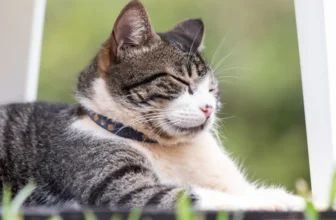As American Wirehair cats become more popular as pets, their unique personalities and behaviors can sometimes present challenges for their owners. From aggression to anxiety, these feline friends can display a variety of behavioral issues that can be overwhelming for their human companions. But fear not! With the right training and environmental changes, as well as early socialization and potential medical intervention, many of these issues can be managed successfully. In the following sections, we’ll explore common behavioral issues in American Wirehair cats and provide step-by-step strategies to help owners deal with them effectively. So, without further ado, let’s dive into the world of American Wirehair cat behavior and explore ways to help these amazing feline companions thrive.
Common Behavioral Issues
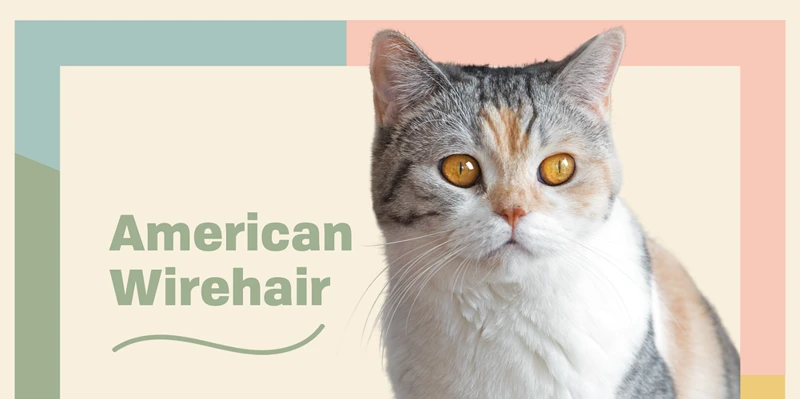
As cat owners, we love our furry friends unconditionally, but sometimes their behavior can leave us feeling perplexed. American Wirehair cats may have a unique personality compared to other cat breeds. Understanding their temperament is essential to address any behavioral issues that might arise. In this section, we will highlight some of the most common behavioral issues that American Wirehair cats may exhibit and provide tips to overcome them. If you’re interested in learning more about the personality and traits of these cats, check out our article on the top 5 behavioral traits of American Wirehair cats or American Wirehair cats’ temperament.
Aggression
Aggression can be one of the most concerning behavioral issues for American Wirehair cat owners. It can manifest through biting, scratching, hissing, growling, and even chasing after family members or other pets.
Understanding the cause of the aggression is key to resolving the issue. In most cases, it is either fear-based or territorial. Fear-based aggression may arise from cats being exposed to new environments, people, or other animals. Territorial aggression, on the other hand, may occur when a cat perceives a threat to their territory.
What to Do:
| Step | Description |
|---|---|
| 1 | Remove the trigger – if the aggression is related to a particular situation or environment, remove the cat from that situation or remove the trigger. |
| 2 | Don’t punish the cat – punishment can cause the cat to become even more defensive and aggressive. Instead, try to redirect their attention with treats or toys. |
| 3 | Provide a safe space – give the cat a space of their own where they can feel safe and relaxed, like a separate room or a cozy cat bed. |
| 4 | Use positive reinforcement training – reward your cat for calm and non-aggressive behavior with treats or affection. This will encourage good behavior and discourage bad behavior. |
| 5 | Consult with a veterinarian – if the aggression persists or is severe, seek help from a veterinarian who can rule out any underlying medical conditions and recommend behavior modification techniques or medication if necessary. |
It’s important to note that aggression in American Wirehair Cats is not a common trait in their behavioral disposition. However, if you notice more than one of the behaviors from our list in our previous article, you might need to consult with an experienced cat trainer to eliminate them before they escalate into something dire.
Remember that patience and understanding are key when dealing with aggressive behavior in American Wirehair cats, and with consistent training and environmental changes, you can help your cat overcome their aggression and live a happy, healthy life.
Scratching
Scratching is a natural behavior for American Wirehair cats that helps them stretch, mark their territory, and maintain their claws. However, it can be a frustrating issue for cat owners when their furniture, curtains, or carpets become the target of their cat’s scratching. Luckily, there are some steps you can take to address this behavior.
1. Provide a scratching post: Cats need an appropriate place to scratch, so providing a sturdy scratching post with a rough surface can redirect their scratching behavior. Place the scratching post in a visible and easily accessible area of your home and use positive reinforcement to encourage your cat to use it.
2. Double-sided tape or aluminum foil: To prevent your cat from scratching on unwanted furniture or surfaces, use double-sided tape or aluminum foil to deter them from those areas. Cats do not like the sticky feeling on their paws or the sound and texture of aluminum foil.
3. Trim their claws: Keeping your American Wirehair cat’s claws trimmed can reduce the damage they can do when scratching. However, if you are not comfortable doing it yourself, it’s best to take them to a veterinarian or groomer for this task.
4. Use pheromone sprays: Pheromone sprays can be used to calm your American Wirehair cat and discourage them from scratching. The sprays are designed to mimic the pheromones cats release from their facial glands when they rub up against an object, which signals that the object is safe and familiar.
5. Don’t punish: Never punish your cat for scratching, as this can increase their anxiety and cause more unwanted behavior. Instead, focus on redirecting their behavior to a more appropriate place.
Keep in mind that American Wirehair cats may have individual preferences for the type of scratching post they like. Some prefer vertical posts, while others like horizontal surfaces. Experiment with different types and textures of scratching posts or surfaces to see what your cat prefers.
By providing appropriate scratching post, using deterrents, trimming their claws, using pheromone sprays, and avoiding punishment, you can successfully address your American Wirehair cat’s scratching issues.
Anxiety
Just like humans, anxiety is a common problem among American Wirehair cats, and it can greatly disrupt their behavior, making it difficult to live with them. Anxiety can manifest in several ways, such as excessive meowing, constant hiding, or destructive scratching. As a cat owner, it is essential to understand how to deal with anxiety and help your furry friend feel safe and comfortable in their surroundings.
One of the main causes of anxiety in cats is a lack of stimulation or interaction. It is crucial to provide your cat with enough toys, scratching posts, and playtime so that they do not become bored or lonely. Additionally, ensuring their environment is comfortable and favorable can go a long way in reducing anxiety in these felines.
Another way to battle anxiety in American Wirehair cats is to incorporate positive reinforcement training techniques. This training process involves rewarding your cat with treats or other rewards each time they display good behavior. It helps build a positive relationship between you and your furry friend, which can significantly reduce their anxiety levels.
Creating a relaxing environment can also help your cat combat anxiety. This can be achieved by installing pheromone plug-ins or playing soothing music in the background. Additionally, minimizing loud noises or other stressful elements like keeping your cat away from guests when they visit can also help.
In severe cases of anxiety, it is best to seek the assistance of a veterinarian. They can prescribe medications like anti-anxiety drugs to help manage your cat’s anxiety levels. It is crucial to follow dosage instructions carefully, and the medication should only be prescribed by a qualified veterinary professional.
Anxiety is a common problem among American Wirehair cats, but it can be managed through proper training, environmental changes, and, in extreme cases, medication. As a cat owner, recognizing and addressing this issue can help your feline lead a happier and healthier life. For more information on socialization techniques that can help prevent anxiety, consider reading our article on early socialization for American Wirehair cats.
Training Methods
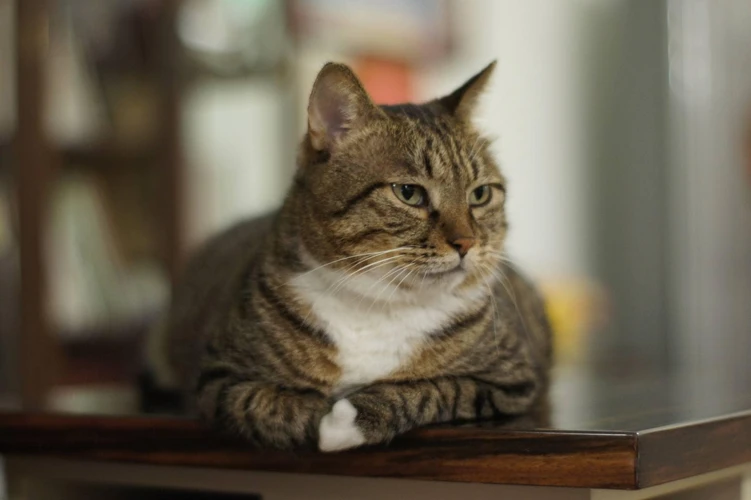
Training is a crucial aspect of managing the behavior of American Wirehair cats. Whether your furry companion is displaying signs of aggression, scratching furniture, or experiencing anxiety, implementing effective training methods is imperative. Through the utilization of positive reinforcement, clicker training, and behavior modification, you can encourage and reinforce good behavior while discouraging negative tendencies. In this section, we will delve into these proven training methods that can help modify your cat’s behavioral issues in a gentle and kind manner.
Positive Reinforcement
One effective method for dealing with behavioral issues in American Wirehair cats is positive reinforcement. This approach involves rewarding good behavior with treats, toys or praise, rather than punishing bad behavior. Positive reinforcement is considered more effective than punishment because it is more likely to encourage the cat to repeat the good behavior.
Here are some tips for implementing positive reinforcement training with your American Wirehair cat:
- When your cat displays good behavior, immediately reward them with a treat or toy. This helps your cat associate the good behavior with the reward.
- Avoid using punishment or negative reinforcement, such as yelling or hitting, as this can increase the cat’s stress and anxiety.
- Be consistent with positive reinforcement. Reward good behavior every time it occurs and avoid accidentally rewarding bad behavior.
- Use small, healthy treats for rewards, such as small pieces of cooked chicken or fish. This will prevent overfeeding and weight gain.
- If your cat is not motivated by food, try using playtime or verbal praise as rewards.
Positive reinforcement can be used to address a wide range of behavioral issues in American Wirehair cats, from scratching on furniture to aggressive behavior. It’s important to remember that training takes time and patience, but using positive reinforcement techniques can help build a stronger bond between you and your cat.
Clicker Training
Clicker training is a popular training method used for American Wirehair cats that aims to reinforce positive behaviors. It involves using a clicker, a small handheld device that produces a distinct clicking sound, as a signal to indicate to the cat that they have performed a desirable behavior. This training method is highly effective and recommended for American Wirehair cats that need to overcome behavioral issues.
Below is a table outlining the steps involved in clicker training for American Wirehair cats:
| Step | Description |
|---|---|
| Step 1: | Introduce the clicker to your cat. Allow the cat to sniff and investigate the clicker to familiarize themselves with the device. |
| Step 2: | Associate the clicker sound with a positive reward. For example, click the clicker and immediately offer a treat or praise your cat. Repeat this several times, ensuring that the sound of the clicker is always followed by a positive reward. |
| Step 3: | Start training with simple commands. For example, using a treat, lure your cat into a sit position and immediately click the clicker. As soon as the clicker is clicked, give the treat. Repeat this several times until your cat associates the sound of the clicker with the desired behavior. |
| Step 4: | Gradually increase the complexity of the commands. Begin to introduce new behaviors, such as come and stay. Always click the clicker immediately after your cat performs the desired behavior and offer a treat or praise your cat to reinforce the behavior. |
| Step 5: | Practice regularly with your cat. Consistency is key with clicker training. Practice several times a day, keeping each session short and always ending on a positive note. |
Clicker training is a successful training method because it utilizes positive reinforcement to encourage good behavior. It is a kind, gentle way to train your American Wirehair cat and should be considered as an effective option for behavioral modification. With patience, consistency, and regular training, clicker training can significantly improve your cat’s behavior and strengthen the bond between you and your feline friend.
Behavior Modification
Behavior modification techniques can be extremely helpful in dealing with behavioral issues in American Wirehair cats. These techniques rely on the principle of replacing undesirable behaviors with desirable ones. Here are some effective behavior modification techniques that you can try with your cat:
- Identify the cause: In order to successfully modify your cat’s undesirable behavior, it is important to identify the underlying cause. This requires observing your cat’s behavior closely and recognizing any environmental or situational triggers that may be contributing to the behavior.
- Positive reinforcement: Positive reinforcement involves rewarding your cat for exhibiting desirable behaviors. This could be something as simple as giving your cat a treat when they use their scratching post instead of your furniture. Positive reinforcement encourages your cat to repeat desirable behaviors.
- Redirecting attention: When you notice your cat exhibiting undesirable behavior, redirect their attention to a different activity. For example, if your cat starts scratching your couch, redirect their attention by offering them a toy to play with or taking them to their scratching post.
- Counter-conditioning: This technique involves changing your cat’s emotional response to a particular stimulus. If your cat has a negative emotional response to a certain situation, you can gradually change their emotional response by pairing the situation with something positive. For example, if your cat is fearful of loud noises, you could pair the noise with a treat to help your cat associate the noise with something positive.
- Desensitization: Desensitization involves gradually exposing your cat to something that they are fearful of or reactive towards, in a controlled and positive manner. This can be helpful for cats who are fearful of being handled or groomed.
Remember that behavior modification takes time, patience, and consistency in order to be effective. If you’re struggling to modify your cat’s behavior, consider consulting with a professional cat behaviorist for additional guidance.
Implementing Environmental Changes
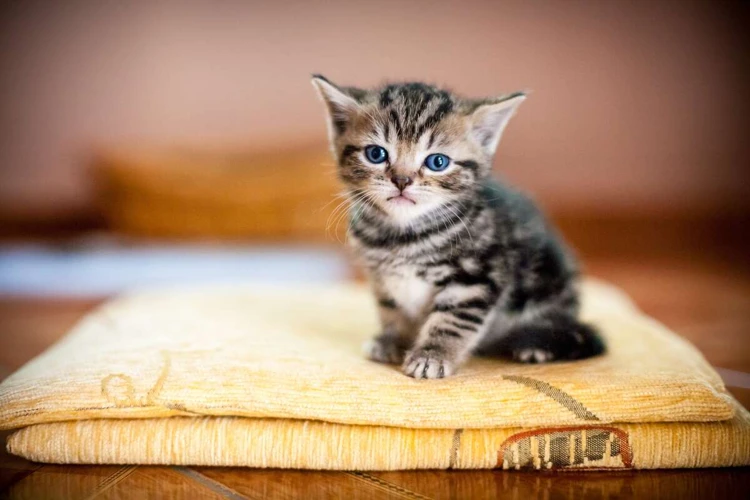
Creating a conducive environment for your American Wirehair cat plays a significant role in dealing with their behavioral issues. Simple environmental changes can have a significant impact on their demeanor in the long run. Here we will discuss some of the best implementation methods to adopt to help eliminate your cat’s common behavioral issues. By making a few changes to their litter box placement, providing scratching posts, allocating play spaces, and creating a relaxing environment, we can significantly reduce the chance of our furry friends engaging in negative behaviors. Let’s dive in and explore these methods further.
Litter Box Placement
If you’re facing issues with your American Wirehair cat not using their litter box properly, litter box placement could be the main culprit. Here are some tips to make sure your cat’s litter box placement is appropriate:
- Accessibility: Place the litter box in an easily accessible location for your cat, especially if they’re older or have mobility issues. Make sure it’s in an area where your cat is most likely to spend their time and is comfortable.
- Privacy: While accessibility is vital when it comes to litter box placement, cats also need their privacy. If your cat feels uncomfortable when using the litter box, they may start avoiding it. Choose a private location where your cat can do their business without feeling disturbed or frustrated.
- No obstacles: Make sure there are no obstacles nearby your cat’s litter box, including separate bowls or food containers. Just like humans, cats like to have their toilet in a clean and open space.
- Number of litter boxes: If you have multiple cats in your household, it is advisable to have more than one litter box. Veterinarians recommend having at least one litter box per cat, plus an additional one as a backup.
- Cleanliness: Ensure that the litter box is cleaned regularly. Most cats prefer a clean litter box, and if it’s too dirty, your cat might refuse to use the litter box.
By following these tips, you can help ensure your cat feels comfortable using their litter box, and any related behavior issues are minimized.
Scratching Posts
When it comes to dealing with behavior issues in American Wirehair cats, one of the most common problems owners face is scratching. This can become a major issue as it can lead to damage of furniture and other household items. However, instead of trying to discourage the cat from scratching altogether, owners can provide an appropriate outlet for this behavior. Scratching posts are the perfect solution for this problem.
Scratching posts come in different shapes and sizes, and choosing the right one might depend on your cat’s preferences. Some cats might prefer a more vertical post, while others might prefer a horizontal one. However, most American Wirehair cats prefer a sturdy and tall scratching post that they can stretch their entire bodies against. It is important to make sure that the scratching post is made of sturdy material, such as sisal or carpet, so that it can withstand repeated scratching.
If your cat is not immediately interested in the scratching post, you can try to encourage them by placing small amounts of catnip on the post. This will help to attract the cat’s attention and encourage them to engage with the post. Once your cat starts using the scratching post, it is important to reward them with treats or positive reinforcement to encourage them to continue using it.
When placing the scratching post in your home, it is important to consider where your cat spends the most time. Ideally, the post should be placed near areas where your cat likes to sleep or play. This will encourage them to use the post more frequently. Additionally, if you have multiple cats, it is important to have multiple scratching posts in different areas of your home to avoid competition and potential aggression.
Using scratching posts is an effective way to redirect your American Wirehair cat’s scratching behavior to an appropriate outlet. By choosing the right post and placing it in an ideal location, you can help prevent damage to your home and the furniture. Remember to encourage and reward your cat for using the post, and consider using catnip to initially attract their attention to the post.
Providing a Play Space
Cats, including the American Wirehair, require exercise and play to keep them healthy and happy. One way to address behavioral issues in American Wirehair cats is to provide them with a designated play space where they can release their energy and engage in activities that keep them entertained. Here are some tips for creating a play space for your furry friend:
- Choose a suitable location: The play space should be placed in a location that is easily accessible for your cat. It should also be positioned away from any potentially dangerous elements, such as electrical cords or windows with no screens.
- Add interactive toys: Providing your American Wirehair with interactive toys, such as puzzle feeders or laser pointers, can keep them mentally stimulated and physically active.
- Incorporate scratching posts: Cats love to scratch, so it’s essential to add scratching posts to their play space. This can protect your furniture and keep your cat’s claws healthy.
- Include cozy hiding spots: American Wirehairs enjoy having a cozy spot to rest and observe their surroundings. You can create this by adding a cat tree with a hiding spot or a covered bed in their play space.
- Supply vertical spaces: American Wirehairs love to climb and perch. Providing your cat with vertical spaces, like a tall cat tree or a wall-mounted shelf, can give them the opportunity to do so.
By providing your American Wirehair with a designated play space that includes interactive toys, scratching posts, hiding spots, and vertical spaces, you’re ensuring they have an outlet for their energy and keeping them mentally stimulated. This can help address behavioral issues and keep your furry friend happy and healthy.
Creating a Relaxing Environment
To help prevent behavioral issues in American Wirehair cats, it’s important to create a relaxing environment for them. This can be achieved by considering a few key factors such as noise levels, lighting, and scent.
Noise Levels: Cats are highly sensitive to noise and can easily become agitated if the environment is too loud. As such, it’s important to minimize any unnecessary noise in the home. This can be achieved by turning down the volume on the television or music, using soundproof curtains on windows, or even using a white noise machine to help drown out any external noises.
Lighting: Cats are also sensitive to lighting, both natural and artificial. It’s important to provide a well-lit environment during the day as cats are naturally diurnal creatures. However, at night it’s important to create a calm and dim environment to help them relax. This can be achieved by using low wattage light bulbs or even installing dimmer switches in the room they sleep in.
Scent: Cats have a highly developed sense of smell and can become stressed or agitated if they’re exposed to strong or unpleasant scents. Providing a calming scent such as lavender or chamomile can help reduce stress levels in cats. This can be achieved through the use of scent diffusers or even by using natural sprays in the home.
In addition to these factors, it’s important to provide your American Wirehair with a comfortable and cozy sleeping area. This can be achieved by providing them with a soft and comfortable bed, blankets, and even a few toys to play with.
Creating a relaxing environment for your American Wirehair cat is an essential component in helping to prevent behavioral issues. By taking into consideration factors such as noise levels, lighting, and scent, you can help reduce stress levels and create a comfortable and safe environment for your furry friend.
| Factors to Consider | How to Achieve |
|---|---|
| Noise Levels | Reduce unnecessary noise in the home |
| Lighting | Provide well-lit environment during the day and create a calm and dim environment at night |
| Scent | Provide calming scent such as lavender or chamomile |
| Sleeping Area | Provide a soft and comfortable bed, blankets and toys for play |
Socialization Techniques
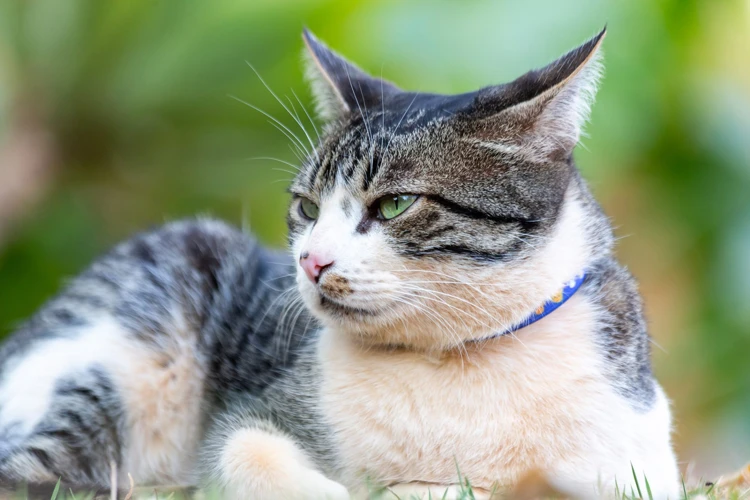
Welcoming a new American Wirehair cat into your home can be both exciting and overwhelming. One of the most important factors in ensuring that your furry friend adapts well to their new environment is socialization. Socialization refers to the process of exposing your cat to different experiences and stimuli and helping them learn how to interact with the world around them. Whether you’ve brought home a kitten or an adult cat, implementing socialization techniques can help prevent behavioral issues and strengthen the bond between you and your feline companion. Let’s take a closer look at some effective socialization techniques to help your American Wirehair cat thrive.
Early Socialization
Early socialization is crucial for American Wirehair cats to develop proper social skills and reduce the risk of future behavioral issues. It is essential to expose kittens to various environments, people, and other animals to ensure they grow up to be well-adjusted adults.
Socialization Techniques
| Technique | Description |
|---|---|
| Handling and Touching | Get your kitten used to being handled and touched by different people, including children. Introduce them to being petted, hugged, and held gently, so they become comfortable with human touch. |
| Exposure to Different Environments | Take your kitten to different places like parks, beaches, pet stores, or any other place that might be noisy or crowded. Exposing them to different environments helps reduce anxiety and fear of new experiences. |
| Socializing with other pets | If you have other pets, introduce them to your kitten gradually. Keep your kitten in a safe area and allow your other pets to get used to their scent before any face-to-face interactions. |
It is best to start socializing your kitten as early as possible, ideally between two to seven weeks. This period is when American Wirehair cats are most receptive to new experiences and learn quickly. However, if you adopt an older cat, socialization is still possible with patience and persistence.
Remember to keep socialization positive and rewarding for your kitten, using toys and treats to encourage good behavior. Gradually increase the duration of socialization sessions and ensure that your kitten is comfortable and not overwhelmed.
Early socialization is an essential aspect of owning an American Wirehair cat. It helps improve their overall behavior, reducing the risk of future issues like aggression and anxiety. With proper socialization techniques, your cat will grow up to be a well-adjusted and friendly companion for years to come.
Introducing Other Pets
When introducing a new pet to your American Wirehair cat, it’s important to do so gradually to avoid any negative behavioral issues. Here are some steps to follow when introducing other pets:
- Start slow: It’s important to introduce the pets in a gradual manner. Begin by letting them sniff each other from a safe distance and monitor their behavior closely.
- Supervise interaction: Make sure to supervise the first few interactions between your cat and the new pet closely. Keep them in separate rooms at first and slowly allow them to spend more time together under your watchful eye.
- Positive reinforcement: Reward good behavior with positive reinforcement such as treats or praise. This helps your pets associate good behavior with positive experiences.
- Provide separate resources: Make sure to provide separate resources such as food bowls, water bowls, and toys for each pet to avoid any potential competition or conflicts.
- Be patient: Introducing pets to each other can take time and requires patience. Don’t rush the process and allow your pets to gradually get to know each other.
By following these steps and being patient, you can help your American Wirehair cat peacefully coexist with other pets in your household.
Medical Intervention
As much as we try to address our American Wirehair Cat’s behavioral issues through training and environmental changes, it’s possible that some of these issues may be rooted in medical problems. In such cases, consulting with a veterinarian can be an essential step in addressing your pet’s needs. Medical intervention can take many forms, and it’s important to approach it with the same care and attention you would give any other aspect of your cat’s well-being. Let’s take a closer look at what medical intervention may entail.
Consulting with a Veterinarian
When dealing with behavioral issues in American Wirehair cats, consulting with a veterinarian is a crucial step to take. A veterinarian can help rule out any underlying medical conditions that may be causing or contributing to the inappropriate behavior.
During the consultation, the veterinarian will perform a physical exam to check for any signs of illness or injury. They may also ask about the cat’s behavior history and any recent changes in their environment. Based on the findings, the veterinarian may recommend further diagnostic tests or refer the cat to a veterinary behaviorist.
Diagnostic Tests: Depending on the cat’s symptoms, the veterinarian may recommend various diagnostic tests such as blood work, urinalysis, fecal test, and X-rays. These tests can help identify any underlying medical conditions such as urinary tract infections, diabetes, or arthritis, which can contribute to behavioral issues.
Veterinary Behaviorist: If the veterinarian suspects that the behavioral issues are not related to any medical condition, they may refer the cat to a veterinary behaviorist. A veterinary behaviorist is a veterinarian who specializes in animal behavior and can develop a behavior modification plan tailored to the cat’s specific needs.
It is essential to schedule a follow-up appointment with the veterinarian after implementing any behavior modification plan or medication. This is to ensure that the cat’s progress is monitored, and any necessary adjustments can be made.
Consulting with a veterinarian is an integral part of managing behavioral issues in American Wirehair cats. By ruling out any medical conditions and seeking professional guidance, cat owners can help their furry friends live a happy and healthy life.
| Benefits of consulting with a veterinarian |
|---|
| Identify any underlying medical conditions |
| Receive professional guidance from a veterinary behaviorist |
| Develop a customized behavior modification plan |
| Monitor progress and make necessary adjustments |
Prescription Medication
When dealing with severe or persistent behavioral issues in American Wirehair cats, prescription medication may be necessary. It is important to understand that this should never be the first line of defense, but rather a last resort after all other options have been exhausted.
Here are some common prescribed medications for cats with behavioral issues:
- Amitriptyline: This medication is typically used to treat anxiety in cats, as it works by increasing the amount of serotonin and norepinephrine in the brain. It can help with obsessive-compulsive behaviors and reduce aggressive tendencies.
- Fluoxetine: Also known as Prozac, this medication is another option for cats with anxiety or aggression issues. It increases serotonin levels in the brain and can help with compulsive behaviors like excessive grooming or destructive scratching.
- Buspirone: This medication is typically used to treat anxiety in cats and can help with urine spraying, excessive meowing, and other behavioral issues associated with anxiety. Buspirone works by increasing serotonin in the brain, but it can take several weeks to see results.
- Clomipramine: This medication is typically used to treat obsessive-compulsive disorders in cats, such as excessive grooming, excessive licking, and other repetitive behaviors. Clomipramine works by increasing serotonin levels in the brain and may take several weeks to see results.
It is important to note that all of these medications require a prescription from a veterinarian, and dosages must be carefully monitored. It is also important to follow all instructions given by the veterinarian, as abrupt changes in medication or dosage can be harmful to your cat.
While prescription medication may be necessary for some cats, it should always be a last resort and should only be used when all other methods have been exhausted. Always consult with a veterinarian before starting your cat on any medication.
Conclusion
After reading this article, you should feel more equipped to handle behavioral issues in your American Wirehair cat. Remember that aggression, scratching, and anxiety are common problems in cats, and they can be addressed through positive reinforcement, clicker training, behavior modification, environmental changes, and socialization.
Creating an optimal environment for your cat is crucial. By providing a designated play space, scratching posts, and a relaxing environment, your cat will feel more at ease. Additionally, proper litter box placement can prevent inappropriate elimination.
Socialization plays a vital role in ensuring your cat is well-adjusted and comfortable around other animals and people. Early socialization, introducing other pets, and supervised interactions can help establish positive relationships.
If your cat’s behavioral issues persist, it may be necessary to seek medical intervention. Always consult with a veterinarian before administering any medication or treatment, as each case is unique.
Remember, addressing behavioral issues in cats takes time, patience, and consistency. With dedication and a willingness to implement these techniques and changes, you can establish a happy and healthy relationship with your American Wirehair cat.
Frequently Asked Questions
Why does my American Wirehair cat scratch everything?
Scratching is a natural behavior for cats to mark their territory, sharpen their claws, and stretch their muscles. Provide your cat with scratching posts to redirect their behavior.
How can I stop my American Wirehair cat from being aggressive?
Aggression can stem from fear, anxiety, frustration, or territorial instinct. Consult with a veterinarian or a certified animal behaviorist for a tailored behavior modification program.
What is positive reinforcement?
Positive reinforcement is a training technique that rewards desirable behaviors, such as treats, praise, or playtime, to encourage repetition of the behavior.
What is clicker training?
Clicker training is a form of positive reinforcement training that uses a clicker as a signal for desirable behavior. The click indicates to the cat that they will receive a reward for the behavior.
How can I create a relaxing environment for my American Wirehair cat?
Provide a quiet and comfortable space for your cat to rest, with soft bedding, dimmed lights, and soothing sounds. You can also use pheromone sprays or diffusers to reduce anxiety.
Why is socialization important for American Wirehair cats?
Early socialization can help prevent behavioral issues, such as fear or aggression, towards other cats, pets, or people. It can also help your cat feel more comfortable and adaptable in new environments.
What should I do if my American Wirehair cat shows signs of anxiety or stress?
Consult with a veterinarian for an evaluation and potential treatment options, such as prescription medication or behavioral therapy. Implement environmental changes, such as providing a cozy hiding spot, and socialization techniques to reduce the triggers of anxiety.
What is behavior modification?
Behavior modification is a structured program that aims to change undesirable behaviors and reinforce desirable ones using positive reinforcement, negative punishment, or counterconditioning techniques.
Can my American Wirehair cat benefit from prescription medication?
Prescription medication can be helpful in managing severe behavioral issues, such as aggression or anxiety, that impact your cat’s quality of life. Consult with a veterinarian for appropriate medication and dosage.
How long does it take to see results from behavior modification?
The timeline for behavior modification varies depending on the cat’s age, temperament, and behavior issue. It can take anywhere from a few weeks to several months to see noticeable results. Consistency and patience are key for success.






